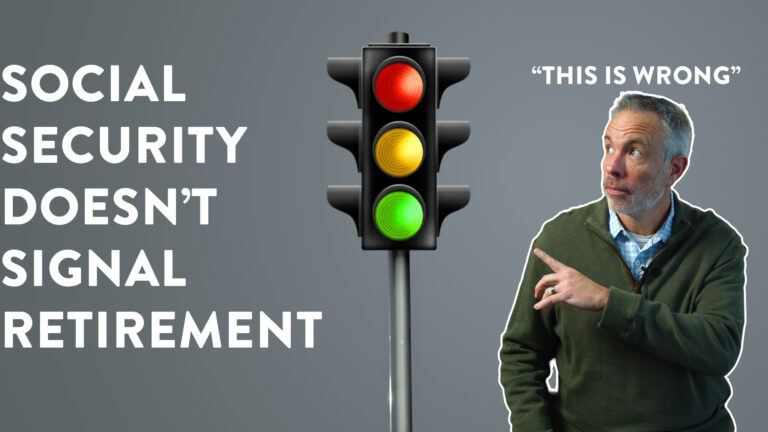As a kid, I always loved playing Would You Rather. We’d spend hours coming up with the most bizarre scenarios we’d likely never end up in to have to choose between. Would you rather speak only in a baby voice for a day or only be spoken to in a baby voice for a day? Only be able to watch one show for the rest of your life or only be able to watch the first episode of any show for the rest of your life? You get the gist!
As an adult, I don’t find myself sitting down to play this game with my friends often (or really much at all). I have, however, come to realize that there are inadvertent decisions we make that come from either mindless or uninformed actions. For example, if I spend my time sitting on the couch and binge-watching the latest season of whatever just released, I’m trading something else: time to be active, time to learn something new, or time to connect with friends. When it comes down to it, would I rather sit and consume hours of TV or spend hours doing something that better aligns with my values? If I’m not feeling well, the TV may still have my vote, but otherwise, I’d ultimately rather do something that simply means more.
Whether we know it or not, we’re playing would you rather with our money every day. The thing is, being mindless with our money decisions could very well be detrimental to our future. Here are 3 decisions you may not realize you’re making:
Would You Rather: Have Free Money or Have No Free Money?
I know, you probably think I’m making this one up, but bear with me. Most recent data shows that almost 30% of private-sector workers with access to a 401(k) or similar plan did not participate, and about 20% of participants don’t take full advantage of their employer’s matching program (Source: Employee Benefits Security Administration). Hear me when I say this: if you work at a company that offers an employer match and you aren’t it out, you are leaving free money on the table. Literally. That’s money that could be working harder for you through tax-advantaged retirement accounts or strategic tax planning.
Let’s assume you’re 30 years old, make $40,000/year, and contribute 3% of your salary ($1,200) to your 401(k). For simple math, we’ll assume that’ll stay the same until you turn 65, but if you are working at a job with no chance of a raise in 35 years, maybe consider relocating. Once you turn 65, you will have contributed $42,000 to your 401(k).
Now, if you get an employer match of dollar-for-dollar up to 3% of your salary – a common offer from companies with a plan – taking full advantage of the match doubles your savings, even assuming no increase in the value of your investments. Can you show me a 35-year time period where the market hasn’t grown at all? Hint: it doesn’t exist! So, let’s assume on average you get a conservative 6% return on your now $84,000 (reminder, $42,000 of that you got for free). With that 6% growth, you now have $267,443.47! All for your investment of $42,000. Maxing out your match increases your retirement savings for free without incurring any additional risk. Remember: you can, and probably should, contribute more than the match threshold, but it’s a great place to start. Of course, this is a hypothetical example and is not representative of any specific situation. Your results will vary, and the hypothetical rates of return used do not reflect the deduction of fees and charges inherent to investing.
Would you rather: Accept Risk or Accept Risk?
It’s a common misconception that if you never invest you don’t have to deal with risk. That’s not true! In fact, if you are entirely in cash, you are fully accepting a major risk: the fact that your money won’t be worth tomorrow what it is worth today. That’s right, I’m talking about inflation. Even if you have a lump sum stashed away somewhere (mattress, savings account, etc.), its worth will decrease over time due to inflation, even if inflation rates remain relatively low.
For example: at the time I’m writing this, the average cup of coffee in the US is $2.60. Assuming a 3% inflation rate, in 20 years, that same cup of coffee will cost you $4.70 – nearly double the cost! Now, that’s just average, run-of-the-mill coffee. So, if you’re like me and enjoy a bit nicer brew, you may be staring down the barrel of a nearly $7 cup of joe! No matter how much money you have stashed away, if a 50% reduction in purchasing power isn’t a risk, I don’t know what is.
Historically, only two broad asset classes have outpaced inflation long-term: Real Estate and Equities. Does that mean I’m telling you to take that lump sum and invest every cent? Absolutely not! See, risk doesn’t have to be an all-or-nothing decision – it’s more of a sliding scale. Your goals, risk tolerance, and circumstances all determine where on that scale you need to land!
Would you rather: Indulge Now or Prepare for Later?
What does it take to waste $7,500 a year? Spending just $20.55 a day on stuff you don’t need. So, think about the last time you said, “It’s only $20!” If you’re anything like me, a good sale or a trip to Target after payday can lead to spending “just $20” fairly often. Here’s the thing: treating yourself on purpose with money you’ve set aside for that purpose is great. Mindless spending on things you probably don’t even need? That could be detrimental to your financial goals. The bottom line is that the money you spend now on something you don’t need will get you nowhere closer to the future you want (unless the future you want is to be a star of the show Hoarders).
Whenever a problem comes up like overspending, it’s important to get to the bottom of why it’s happening. Is it just a habit you’ve formed and gotten comfortable with? Do you feel restricted by the idea of a budget, so your spending feels like an act of rebellion? Do you simply feel overwhelmed or lost when it comes to money, so you bury your head in the sand?
You’ve probably heard the phrase your indecision will become your decision at some point in life. Now, no one’s quite sure where that quote originated, but it rings true regardless. If you aren’t actively preparing for your future and conscious of the decisions you need to make to get there, you’re likely going to face the future feeling a bit uncertain.
Some other signs you may not be preparing for the future you want and deserve?
- Not having a financial plan
- Not investing or contributing to an employer-sponsored retirement plan
- Practicing lifestyle inflation
- Not checking in on your financial wellness regularly
Listen, I get it. Money is something that impacts every aspect of your life, so dealing with these decisions can feel daunting. Ultimately, each of these would you rather–s have some sort of gray area between the two choices, and that can make it feel even more unnerving given that you can’t know if you’ve gotten it 100% right. But, let me let you in on a secret… no one gets it 100% right. That’s life! However, having someone who knows a little more about the behavior of money to walk you through these decisions, help you focus on what matters, and find balance between life now and the future you deserve can make a world of difference. If you have questions or want some guidance, you’re in luck; that’s what we do! Give us a call or shoot us an email, and we’ll be happy to help.
The opinions voiced in this material are for general information only and are not intended to provide specific advice or recommendations for any individual. All performance referenced is historical and is no guarantee of future results.





